Management of Digital Systems: SDLC, Data, and Information Systems
VerifiedAdded on 2023/01/18
|7
|1692
|90
Report
AI Summary
This report, prepared for Chester University, addresses the management of digital systems, focusing on the System Development Life Cycle (SDLC) for a new campus project. It explores the different stages of SDLC, including analysis, planning, design, development, testing, deployment, and maintenance. The report also differentiates between strategic, tactical, and operational data levels, and lists essential hardware and software for IT management. Furthermore, it identifies and explains various information systems, such as Transaction Processing Systems (TPS), Decision Support Systems (DSS), and Online Analytical Processing (OLAP) that can be used for the new campus project, highlighting their roles in supporting different levels of the university's operations and decision-making processes. The report concludes by summarizing the importance of SDLC and information systems in developing and improving digital infrastructure.
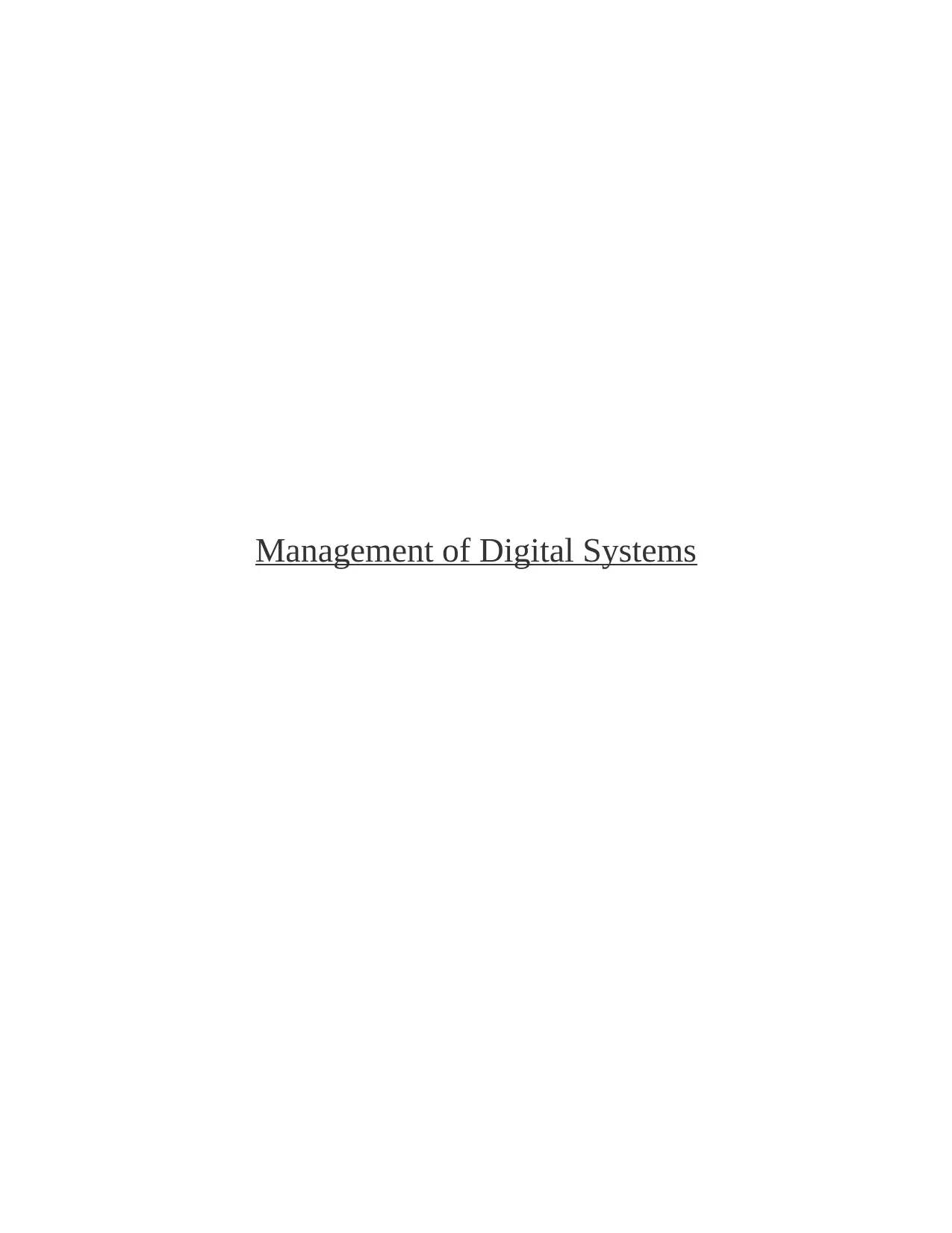
Management of Digital Systems
Paraphrase This Document
Need a fresh take? Get an instant paraphrase of this document with our AI Paraphraser
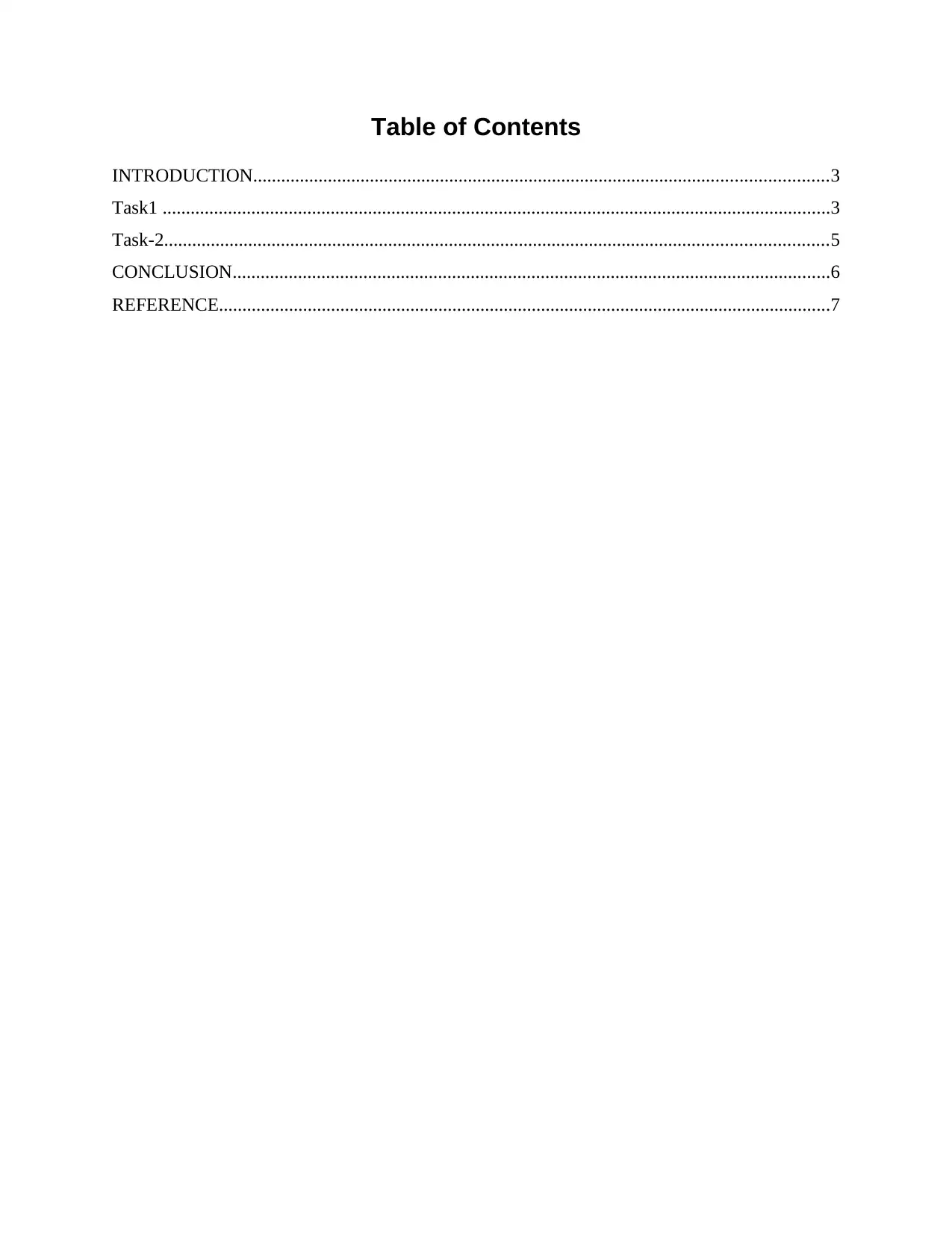
Table of Contents
INTRODUCTION...........................................................................................................................3
Task1 ...............................................................................................................................................3
Task-2..............................................................................................................................................5
CONCLUSION................................................................................................................................6
REFERENCE...................................................................................................................................7
INTRODUCTION...........................................................................................................................3
Task1 ...............................................................................................................................................3
Task-2..............................................................................................................................................5
CONCLUSION................................................................................................................................6
REFERENCE...................................................................................................................................7
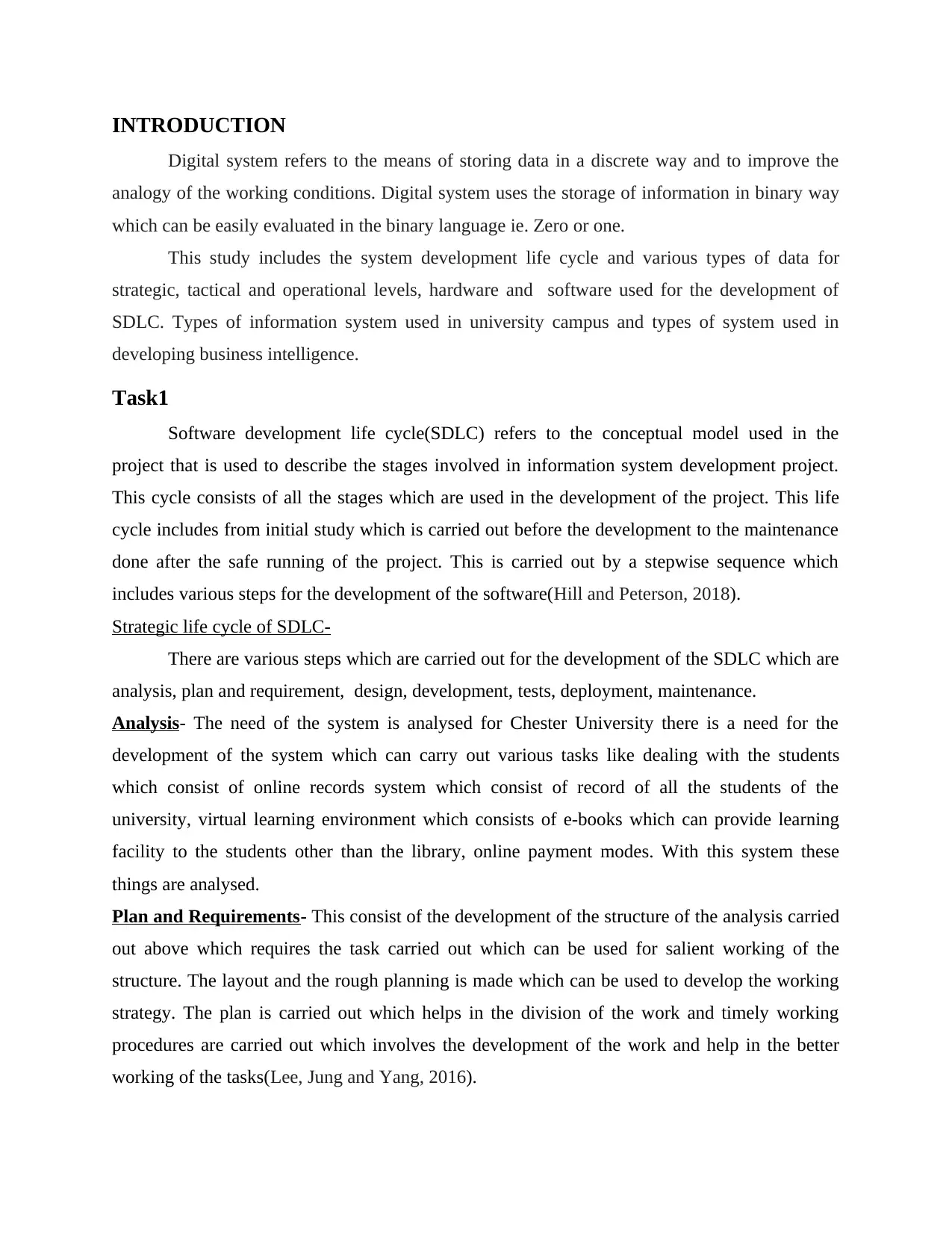
INTRODUCTION
Digital system refers to the means of storing data in a discrete way and to improve the
analogy of the working conditions. Digital system uses the storage of information in binary way
which can be easily evaluated in the binary language ie. Zero or one.
This study includes the system development life cycle and various types of data for
strategic, tactical and operational levels, hardware and software used for the development of
SDLC. Types of information system used in university campus and types of system used in
developing business intelligence.
Task1
Software development life cycle(SDLC) refers to the conceptual model used in the
project that is used to describe the stages involved in information system development project.
This cycle consists of all the stages which are used in the development of the project. This life
cycle includes from initial study which is carried out before the development to the maintenance
done after the safe running of the project. This is carried out by a stepwise sequence which
includes various steps for the development of the software(Hill and Peterson, 2018).
Strategic life cycle of SDLC-
There are various steps which are carried out for the development of the SDLC which are
analysis, plan and requirement, design, development, tests, deployment, maintenance.
Analysis- The need of the system is analysed for Chester University there is a need for the
development of the system which can carry out various tasks like dealing with the students
which consist of online records system which consist of record of all the students of the
university, virtual learning environment which consists of e-books which can provide learning
facility to the students other than the library, online payment modes. With this system these
things are analysed.
Plan and Requirements- This consist of the development of the structure of the analysis carried
out above which requires the task carried out which can be used for salient working of the
structure. The layout and the rough planning is made which can be used to develop the working
strategy. The plan is carried out which helps in the division of the work and timely working
procedures are carried out which involves the development of the work and help in the better
working of the tasks(Lee, Jung and Yang, 2016).
Digital system refers to the means of storing data in a discrete way and to improve the
analogy of the working conditions. Digital system uses the storage of information in binary way
which can be easily evaluated in the binary language ie. Zero or one.
This study includes the system development life cycle and various types of data for
strategic, tactical and operational levels, hardware and software used for the development of
SDLC. Types of information system used in university campus and types of system used in
developing business intelligence.
Task1
Software development life cycle(SDLC) refers to the conceptual model used in the
project that is used to describe the stages involved in information system development project.
This cycle consists of all the stages which are used in the development of the project. This life
cycle includes from initial study which is carried out before the development to the maintenance
done after the safe running of the project. This is carried out by a stepwise sequence which
includes various steps for the development of the software(Hill and Peterson, 2018).
Strategic life cycle of SDLC-
There are various steps which are carried out for the development of the SDLC which are
analysis, plan and requirement, design, development, tests, deployment, maintenance.
Analysis- The need of the system is analysed for Chester University there is a need for the
development of the system which can carry out various tasks like dealing with the students
which consist of online records system which consist of record of all the students of the
university, virtual learning environment which consists of e-books which can provide learning
facility to the students other than the library, online payment modes. With this system these
things are analysed.
Plan and Requirements- This consist of the development of the structure of the analysis carried
out above which requires the task carried out which can be used for salient working of the
structure. The layout and the rough planning is made which can be used to develop the working
strategy. The plan is carried out which helps in the division of the work and timely working
procedures are carried out which involves the development of the work and help in the better
working of the tasks(Lee, Jung and Yang, 2016).
⊘ This is a preview!⊘
Do you want full access?
Subscribe today to unlock all pages.

Trusted by 1+ million students worldwide
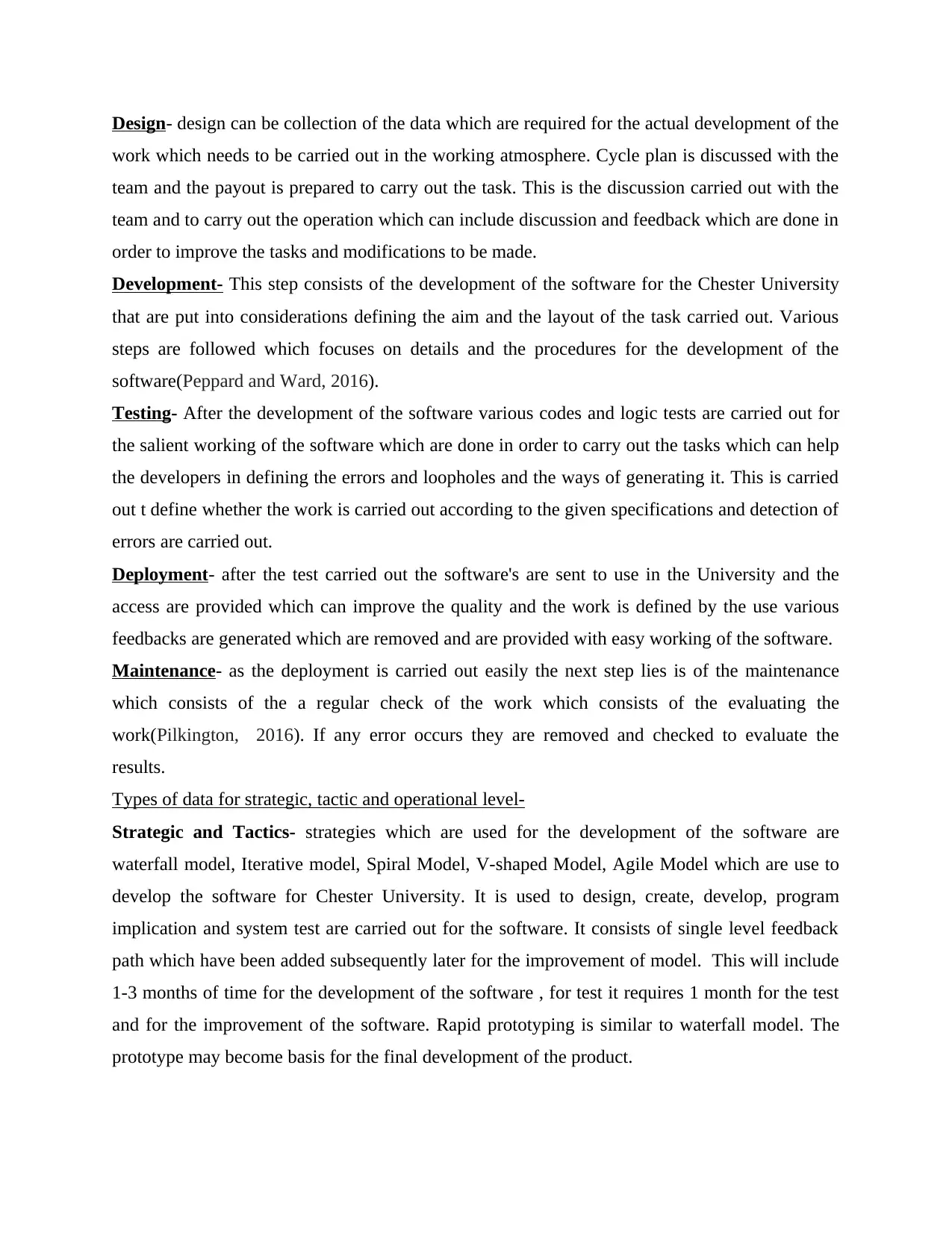
Design- design can be collection of the data which are required for the actual development of the
work which needs to be carried out in the working atmosphere. Cycle plan is discussed with the
team and the payout is prepared to carry out the task. This is the discussion carried out with the
team and to carry out the operation which can include discussion and feedback which are done in
order to improve the tasks and modifications to be made.
Development- This step consists of the development of the software for the Chester University
that are put into considerations defining the aim and the layout of the task carried out. Various
steps are followed which focuses on details and the procedures for the development of the
software(Peppard and Ward, 2016).
Testing- After the development of the software various codes and logic tests are carried out for
the salient working of the software which are done in order to carry out the tasks which can help
the developers in defining the errors and loopholes and the ways of generating it. This is carried
out t define whether the work is carried out according to the given specifications and detection of
errors are carried out.
Deployment- after the test carried out the software's are sent to use in the University and the
access are provided which can improve the quality and the work is defined by the use various
feedbacks are generated which are removed and are provided with easy working of the software.
Maintenance- as the deployment is carried out easily the next step lies is of the maintenance
which consists of the a regular check of the work which consists of the evaluating the
work(Pilkington, 2016). If any error occurs they are removed and checked to evaluate the
results.
Types of data for strategic, tactic and operational level-
Strategic and Tactics- strategies which are used for the development of the software are
waterfall model, Iterative model, Spiral Model, V-shaped Model, Agile Model which are use to
develop the software for Chester University. It is used to design, create, develop, program
implication and system test are carried out for the software. It consists of single level feedback
path which have been added subsequently later for the improvement of model. This will include
1-3 months of time for the development of the software , for test it requires 1 month for the test
and for the improvement of the software. Rapid prototyping is similar to waterfall model. The
prototype may become basis for the final development of the product.
work which needs to be carried out in the working atmosphere. Cycle plan is discussed with the
team and the payout is prepared to carry out the task. This is the discussion carried out with the
team and to carry out the operation which can include discussion and feedback which are done in
order to improve the tasks and modifications to be made.
Development- This step consists of the development of the software for the Chester University
that are put into considerations defining the aim and the layout of the task carried out. Various
steps are followed which focuses on details and the procedures for the development of the
software(Peppard and Ward, 2016).
Testing- After the development of the software various codes and logic tests are carried out for
the salient working of the software which are done in order to carry out the tasks which can help
the developers in defining the errors and loopholes and the ways of generating it. This is carried
out t define whether the work is carried out according to the given specifications and detection of
errors are carried out.
Deployment- after the test carried out the software's are sent to use in the University and the
access are provided which can improve the quality and the work is defined by the use various
feedbacks are generated which are removed and are provided with easy working of the software.
Maintenance- as the deployment is carried out easily the next step lies is of the maintenance
which consists of the a regular check of the work which consists of the evaluating the
work(Pilkington, 2016). If any error occurs they are removed and checked to evaluate the
results.
Types of data for strategic, tactic and operational level-
Strategic and Tactics- strategies which are used for the development of the software are
waterfall model, Iterative model, Spiral Model, V-shaped Model, Agile Model which are use to
develop the software for Chester University. It is used to design, create, develop, program
implication and system test are carried out for the software. It consists of single level feedback
path which have been added subsequently later for the improvement of model. This will include
1-3 months of time for the development of the software , for test it requires 1 month for the test
and for the improvement of the software. Rapid prototyping is similar to waterfall model. The
prototype may become basis for the final development of the product.
Paraphrase This Document
Need a fresh take? Get an instant paraphrase of this document with our AI Paraphraser
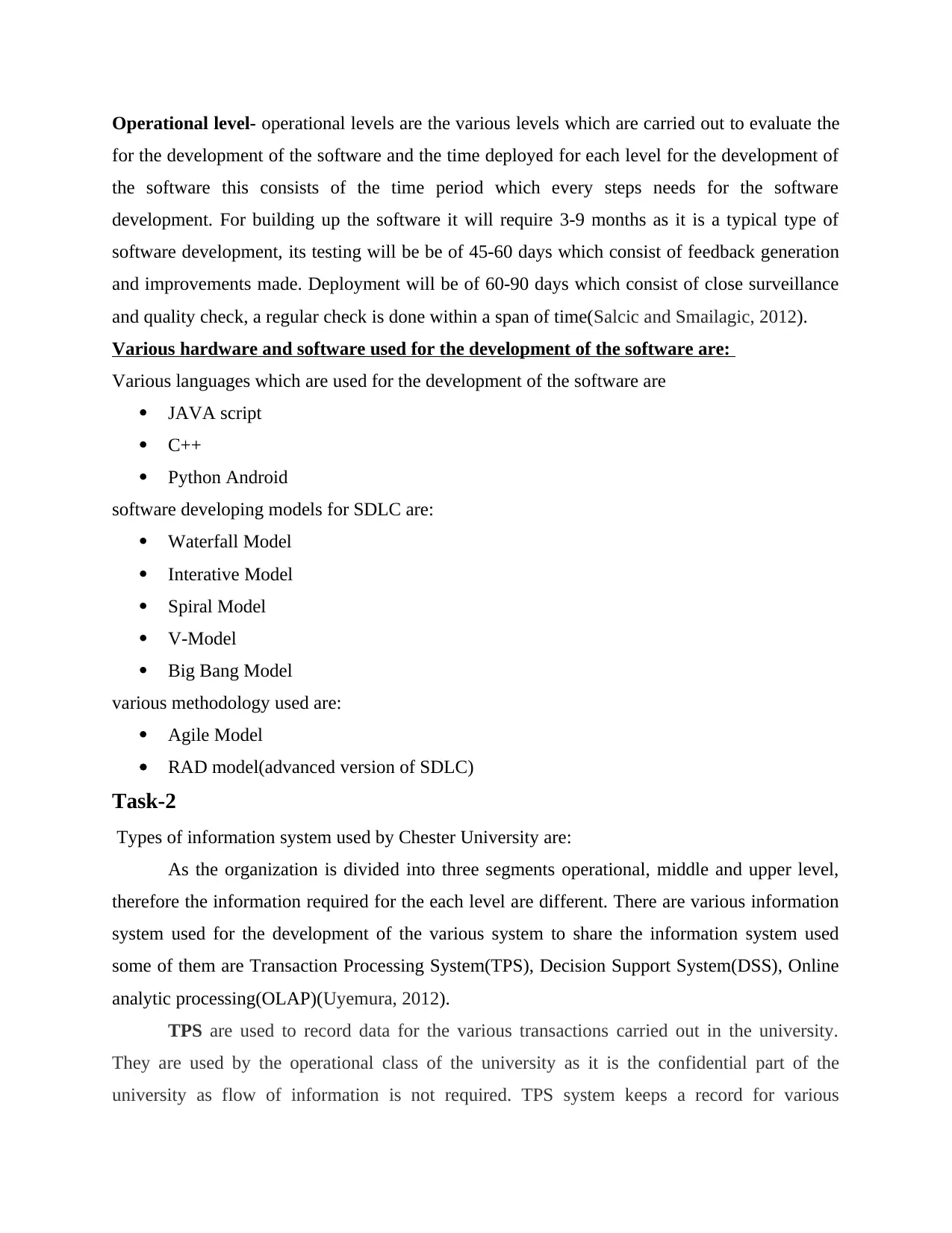
Operational level- operational levels are the various levels which are carried out to evaluate the
for the development of the software and the time deployed for each level for the development of
the software this consists of the time period which every steps needs for the software
development. For building up the software it will require 3-9 months as it is a typical type of
software development, its testing will be be of 45-60 days which consist of feedback generation
and improvements made. Deployment will be of 60-90 days which consist of close surveillance
and quality check, a regular check is done within a span of time(Salcic and Smailagic, 2012).
Various hardware and software used for the development of the software are:
Various languages which are used for the development of the software are
JAVA script
C++
Python Android
software developing models for SDLC are:
Waterfall Model
Interative Model
Spiral Model
V-Model
Big Bang Model
various methodology used are:
Agile Model
RAD model(advanced version of SDLC)
Task-2
Types of information system used by Chester University are:
As the organization is divided into three segments operational, middle and upper level,
therefore the information required for the each level are different. There are various information
system used for the development of the various system to share the information system used
some of them are Transaction Processing System(TPS), Decision Support System(DSS), Online
analytic processing(OLAP)(Uyemura, 2012).
TPS are used to record data for the various transactions carried out in the university.
They are used by the operational class of the university as it is the confidential part of the
university as flow of information is not required. TPS system keeps a record for various
for the development of the software and the time deployed for each level for the development of
the software this consists of the time period which every steps needs for the software
development. For building up the software it will require 3-9 months as it is a typical type of
software development, its testing will be be of 45-60 days which consist of feedback generation
and improvements made. Deployment will be of 60-90 days which consist of close surveillance
and quality check, a regular check is done within a span of time(Salcic and Smailagic, 2012).
Various hardware and software used for the development of the software are:
Various languages which are used for the development of the software are
JAVA script
C++
Python Android
software developing models for SDLC are:
Waterfall Model
Interative Model
Spiral Model
V-Model
Big Bang Model
various methodology used are:
Agile Model
RAD model(advanced version of SDLC)
Task-2
Types of information system used by Chester University are:
As the organization is divided into three segments operational, middle and upper level,
therefore the information required for the each level are different. There are various information
system used for the development of the various system to share the information system used
some of them are Transaction Processing System(TPS), Decision Support System(DSS), Online
analytic processing(OLAP)(Uyemura, 2012).
TPS are used to record data for the various transactions carried out in the university.
They are used by the operational class of the university as it is the confidential part of the
university as flow of information is not required. TPS system keeps a record for various
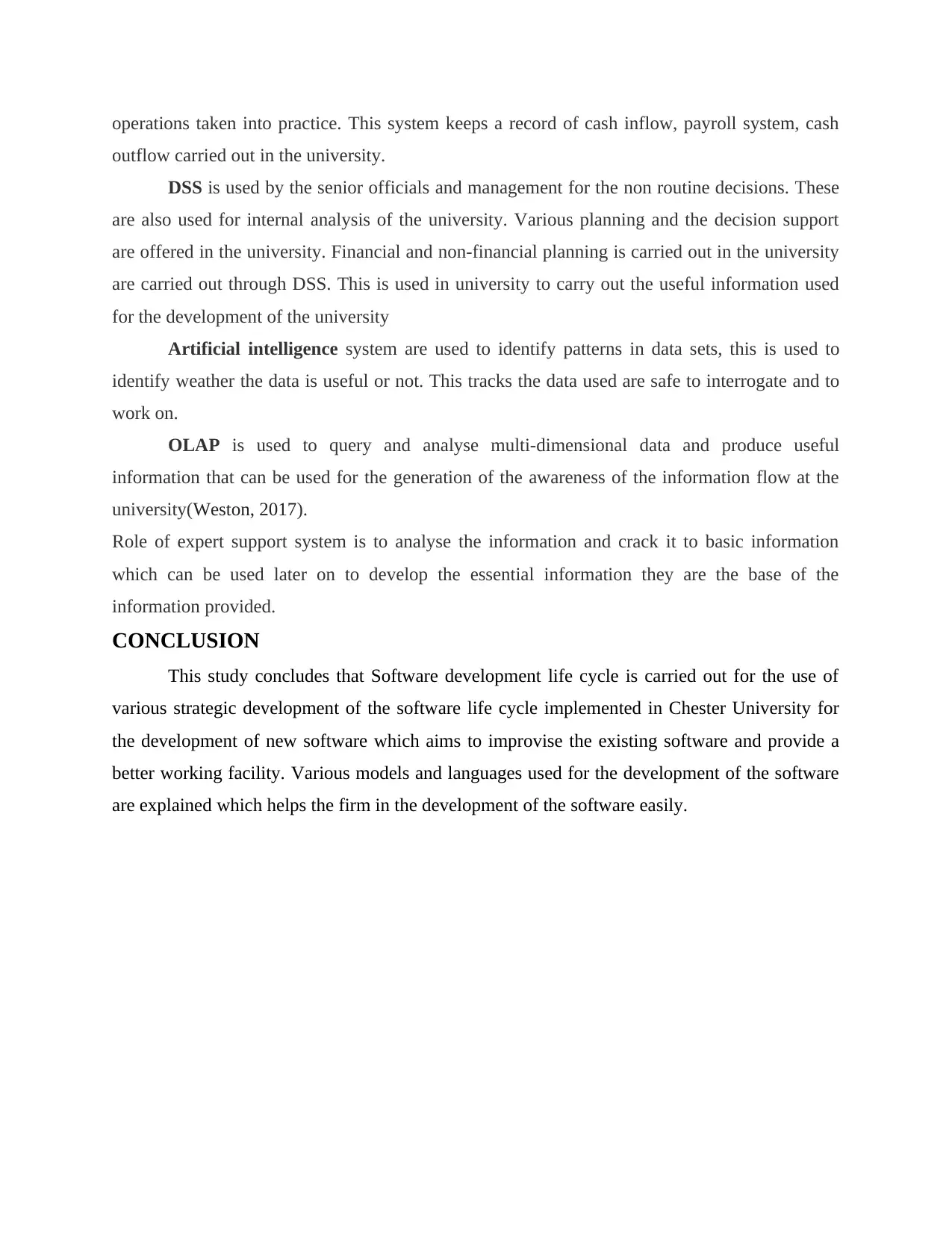
operations taken into practice. This system keeps a record of cash inflow, payroll system, cash
outflow carried out in the university.
DSS is used by the senior officials and management for the non routine decisions. These
are also used for internal analysis of the university. Various planning and the decision support
are offered in the university. Financial and non-financial planning is carried out in the university
are carried out through DSS. This is used in university to carry out the useful information used
for the development of the university
Artificial intelligence system are used to identify patterns in data sets, this is used to
identify weather the data is useful or not. This tracks the data used are safe to interrogate and to
work on.
OLAP is used to query and analyse multi-dimensional data and produce useful
information that can be used for the generation of the awareness of the information flow at the
university(Weston, 2017).
Role of expert support system is to analyse the information and crack it to basic information
which can be used later on to develop the essential information they are the base of the
information provided.
CONCLUSION
This study concludes that Software development life cycle is carried out for the use of
various strategic development of the software life cycle implemented in Chester University for
the development of new software which aims to improvise the existing software and provide a
better working facility. Various models and languages used for the development of the software
are explained which helps the firm in the development of the software easily.
outflow carried out in the university.
DSS is used by the senior officials and management for the non routine decisions. These
are also used for internal analysis of the university. Various planning and the decision support
are offered in the university. Financial and non-financial planning is carried out in the university
are carried out through DSS. This is used in university to carry out the useful information used
for the development of the university
Artificial intelligence system are used to identify patterns in data sets, this is used to
identify weather the data is useful or not. This tracks the data used are safe to interrogate and to
work on.
OLAP is used to query and analyse multi-dimensional data and produce useful
information that can be used for the generation of the awareness of the information flow at the
university(Weston, 2017).
Role of expert support system is to analyse the information and crack it to basic information
which can be used later on to develop the essential information they are the base of the
information provided.
CONCLUSION
This study concludes that Software development life cycle is carried out for the use of
various strategic development of the software life cycle implemented in Chester University for
the development of new software which aims to improvise the existing software and provide a
better working facility. Various models and languages used for the development of the software
are explained which helps the firm in the development of the software easily.
⊘ This is a preview!⊘
Do you want full access?
Subscribe today to unlock all pages.

Trusted by 1+ million students worldwide
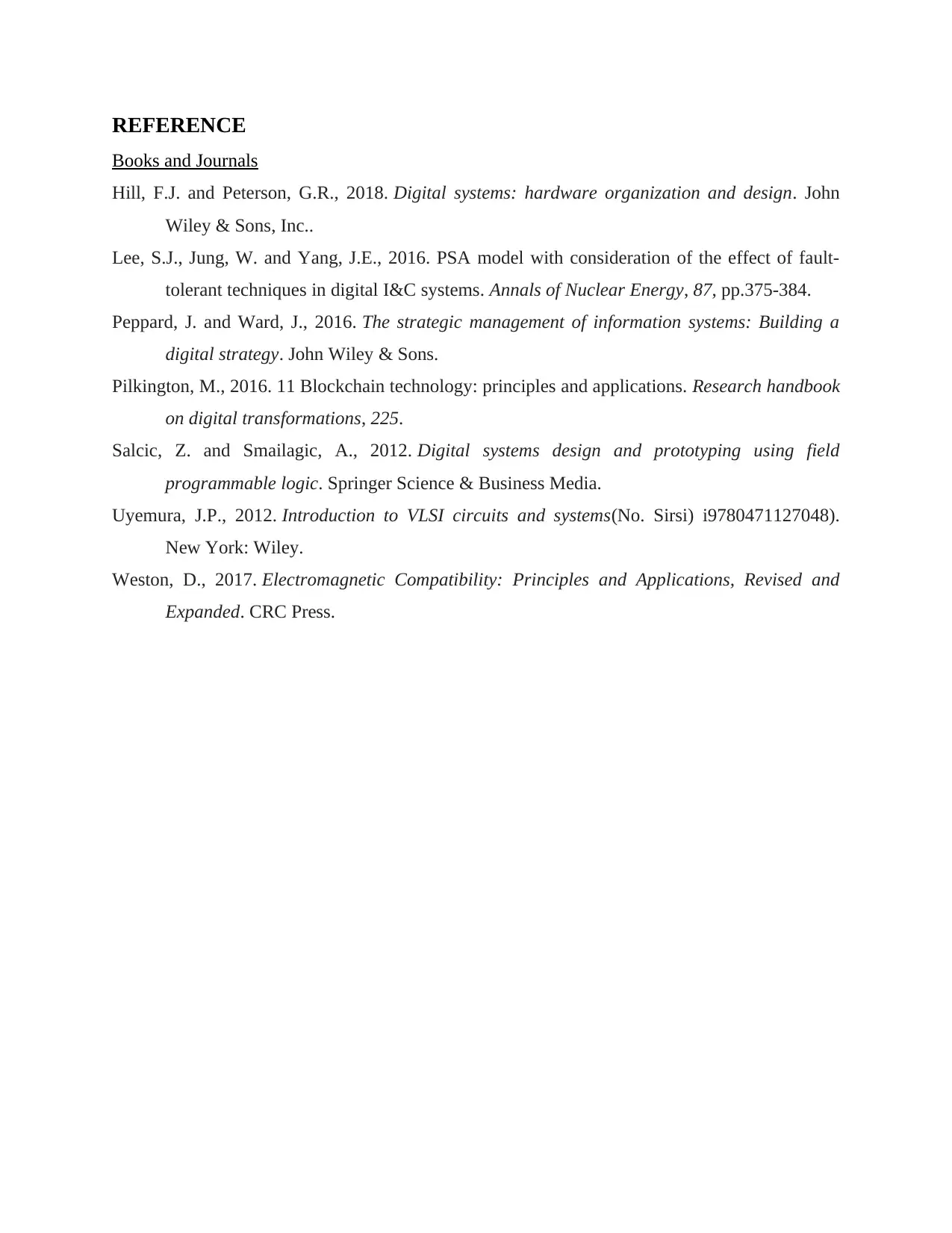
REFERENCE
Books and Journals
Hill, F.J. and Peterson, G.R., 2018. Digital systems: hardware organization and design. John
Wiley & Sons, Inc..
Lee, S.J., Jung, W. and Yang, J.E., 2016. PSA model with consideration of the effect of fault-
tolerant techniques in digital I&C systems. Annals of Nuclear Energy, 87, pp.375-384.
Peppard, J. and Ward, J., 2016. The strategic management of information systems: Building a
digital strategy. John Wiley & Sons.
Pilkington, M., 2016. 11 Blockchain technology: principles and applications. Research handbook
on digital transformations, 225.
Salcic, Z. and Smailagic, A., 2012. Digital systems design and prototyping using field
programmable logic. Springer Science & Business Media.
Uyemura, J.P., 2012. Introduction to VLSI circuits and systems(No. Sirsi) i9780471127048).
New York: Wiley.
Weston, D., 2017. Electromagnetic Compatibility: Principles and Applications, Revised and
Expanded. CRC Press.
Books and Journals
Hill, F.J. and Peterson, G.R., 2018. Digital systems: hardware organization and design. John
Wiley & Sons, Inc..
Lee, S.J., Jung, W. and Yang, J.E., 2016. PSA model with consideration of the effect of fault-
tolerant techniques in digital I&C systems. Annals of Nuclear Energy, 87, pp.375-384.
Peppard, J. and Ward, J., 2016. The strategic management of information systems: Building a
digital strategy. John Wiley & Sons.
Pilkington, M., 2016. 11 Blockchain technology: principles and applications. Research handbook
on digital transformations, 225.
Salcic, Z. and Smailagic, A., 2012. Digital systems design and prototyping using field
programmable logic. Springer Science & Business Media.
Uyemura, J.P., 2012. Introduction to VLSI circuits and systems(No. Sirsi) i9780471127048).
New York: Wiley.
Weston, D., 2017. Electromagnetic Compatibility: Principles and Applications, Revised and
Expanded. CRC Press.
1 out of 7
Related Documents
Your All-in-One AI-Powered Toolkit for Academic Success.
+13062052269
info@desklib.com
Available 24*7 on WhatsApp / Email
![[object Object]](/_next/static/media/star-bottom.7253800d.svg)
Unlock your academic potential
Copyright © 2020–2025 A2Z Services. All Rights Reserved. Developed and managed by ZUCOL.





